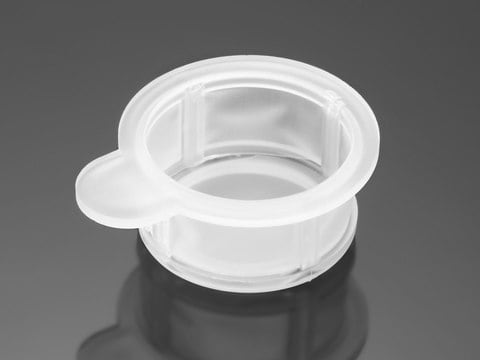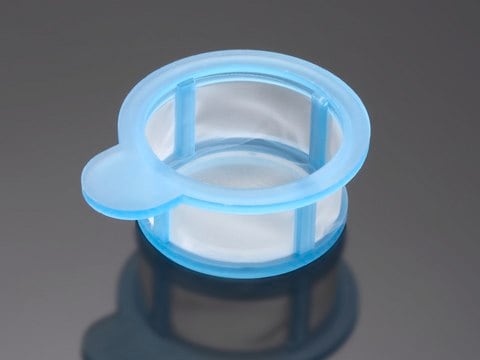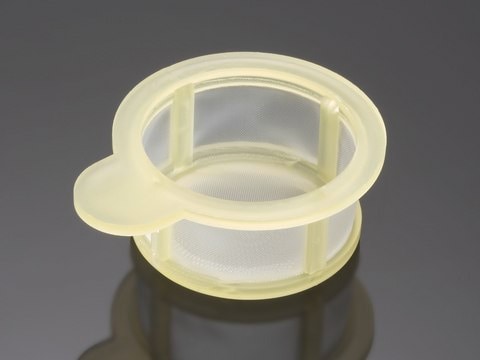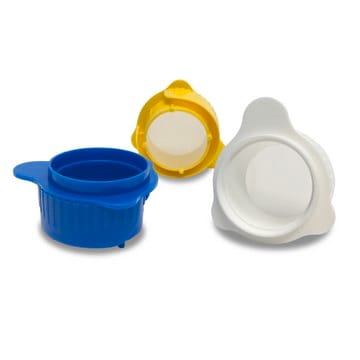CLS431751
Corning® cell strainer
pore size 70 μm, white, sterile, pkg of (individually wrapped), pack of 50 ea, Corning 431751
Sinônimo(s):
Cell Strainer
About This Item
Produtos recomendados
Materiais
Nylon
white
esterilidade
sterile
embalagem
pack of 50 ea
pkg of (individually wrapped)
fabricante/nome comercial
Corning 431751
tamanho de poro
70 μm
Procurando produtos similares? Visita Guia de comparação de produtos
Categorias relacionadas
Descrição geral
Aplicação
- Single cell suspensions of blood cells from marrow, pancreas, thymus, tonsil, and lymph nodes
- Stem cells, tissue-derived cells, and cancer cells
- Preparation of specimens for primary cell cultures and immunogens
- Preparation of freezing stocks
- Filtering agglutinative proteins produced in inactivation serum
Características e benefícios
- Strong nylon mesh with 70- micron pores for optimal performance in a variety of applications
- Evenly spaced mesh pores providing consistent and reliable results
- Conveniently accessible in individual packaging
- Extended lip on strainer enables aseptic handling with forceps
- Molded color-coded polypropylene frame with tab enables easy handling and identification
- Fits all major brands of 50mL conical tubes
- Disposable, easy-to-use, inexpensive, maintains sample integrity
- Sterilized by γ−irradiation, noncytotoxic
Informações legais
Certificados de análise (COA)
Busque Certificados de análise (COA) digitando o Número do Lote do produto. Os números de lote e remessa podem ser encontrados no rótulo de um produto após a palavra “Lot” ou “Batch”.
Já possui este produto?
Encontre a documentação dos produtos que você adquiriu recentemente na biblioteca de documentos.
Os clientes também visualizaram
Artigos
Development of a novel serum-free and xeno-free human mesenchymal stem cell (MSC) osteocyte differentiation media.
Organoid culture products to generate tissue and stem cell derived 3D brain, intestinal, gut, lung and cancer tumor organoid models.
Protocolos
Information about mesenchyme, specifically mesenchymal stem cell procotols. Step-by-step cell culture protocols for mesenchymal stem cell (MSC) isolation, expansion and differentiation.
Nossa equipe de cientistas tem experiência em todas as áreas de pesquisa, incluindo Life Sciences, ciência de materiais, síntese química, cromatografia, química analítica e muitas outras.
Entre em contato com a assistência técnica










